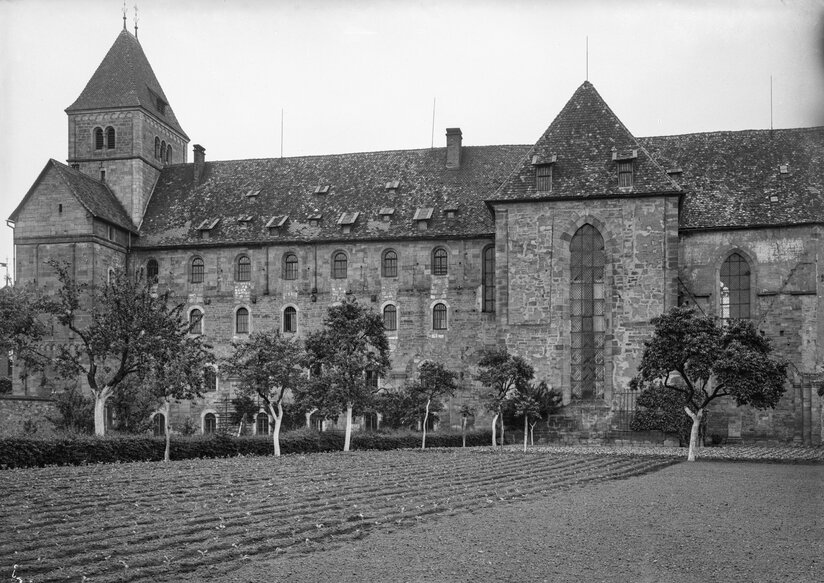Breitenau concentration camp 1933-1934
The Breitenau concentration camp was set up in June 1933. In the field of research, it is known as one of the early concentration camps. Shortly after seizing power, the National Socialists began detaining their political opponents throughout the entire German Reich. The legal basis for imprisonment was provided by the ordinance to protect the people and state (Verordnung zum Schutz von Volk und Staat) of 28 February 1933. What was known as the Reichstag fire ordinance (Reichstagsbrandverordnung) declared a state of emergency and thus transferred far-reaching powers to the National Socialists. Fundamental rights were repealed and the persecution of the political opposition was legalized: From then on, political opponents could be imprisoned without a court ruling under so-called protective custody (Schutzhaft). Mass arrests followed, in which people were initially detained in prisons and temporarily established "detention centres" (Schutzhaftstellen). From the spring of 1933 on, they were finally moved to concentration camps, some of which had been newly built and some of which had been integrated into existing detention centres, such as the concentration camp in the Breitenau workhouse.

The establishment of the concentration camp for political prisoners (Konzentrationslager für politische Schutzhäftlinge) in the Breitenau workhouse took place in this phase of power consolidation. In the scholarly discipline of history, the camp is therefore considered one of the so-called early concentration camps, whose administration and surveillance is characterized by a certain juxtaposition of players that were often in competition with one another. The Breitenau concentration camp fell under the authority of Kassel's Chief of Police. The guard teams were composed of officers from the auxiliary police (Hilfspolizei), who were initially recruited from the SA (Sturmabteilung) and later from the SS (Schutzstaffel) after the former was dismissed. The SS men were members of the "Sondersturm Renthof", a special storm unit in Kassel. This SS elite unit was led by Karl-Otto Koch, who would later become commander of the concentration camps of Esterwegen, Buchenwald and Majdanek.
On 16 June 1933, the first 28 prisoners referred to as political prisoners in protective custody (Schutzhäftlinge) arrived in Breitenau. Until the dissolution in March 1934, a total of 470 persons had been detained in the Breitenau concentration camp. These included political opponents of the National Socialists from the entire district of Kassel ranging from Social Democrats, communists, trade union members and, already at this stage, persecuted Jews. They were placed in the men's house of the facility, in the central nave of the former monastery church. Only a wall separated them from the Protestant parish, which continued to hold its services in the choir of the church. Most of the concentration camp prisoners were released after four to eight weeks. However, from October 1933, a quarter of the prisoners were transferred to larger state concentration camps such as Börgermoor, Esterwegen, Lichtenburg or Sonnenburg, according to Ernst Lohagen (Communist Party of Germany) and Ludwig Pappenheim (Social Democratic Party of Germany). While Lohagen survived, Pappenheim, being a Jewish member of the Social Democratic Party, was murdered in the Neusustrum concentration camp as early as 1934.
